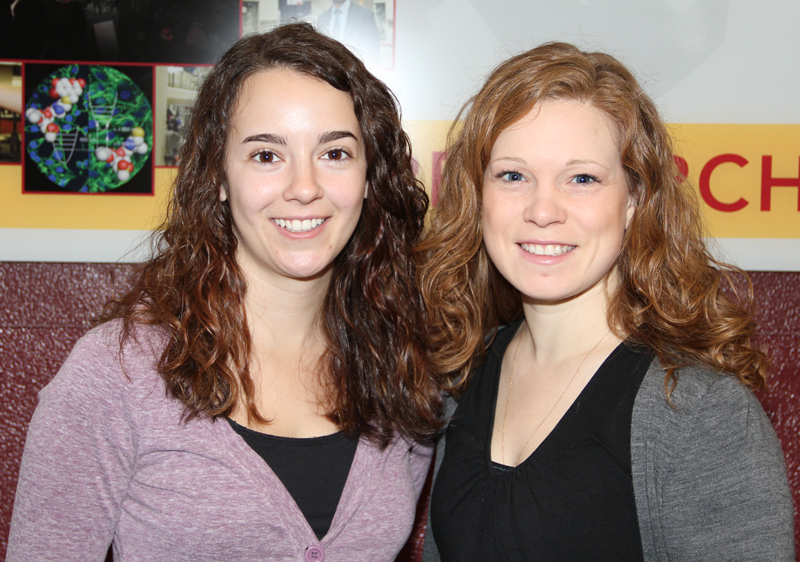

Main navigation | Main content
Two outstanding 4th-year graduate students—Maria Miranda and Katie Peterson—have received Louis T. Dosdall Fellowships for the 2013-14 academic year.
Maria Miranda is conducting research with the tutelage of Professors Marc Hillmyer and William Tolman. Katie Peterson is conducting research with the guidance of Professor Valerie Pierre.
The Louis T. Dosdall Fellowship is open to female graduate students in any field of the natural or physical sciences who show exceptional promise for a successful careers in research. Three fellowships are awarded annually. It provides a $22,500 stipend, and tuition for up to 14 credits per semester.
Maria's research interest is in the area of polymerization catalysis. The following abstract is from her fellowship application: Common plastics, or polymers, are derived from petrochemicals and are neither degradable nor environmentally benign. Developing bio-renewable, biodegradable, and benign polymers hinges on studying how these polymers are made (i.e., polymerization mechanism) from their precursors, or monomers. As a result, we propose a detailed study of the polymerization mechanism of a specific class of bio-based monomers, cyclic esters, varying the molecules that initiate the polymerization. We plan to measure specific details regarding the rate of polymerization of these initiators using an unprecedented approach to elucidate structure-activity relationships. These relationships inform the design of new initiators to improve this polymerization process.
Katie's research area is chemical biology. Her project focuses on detecting oxidative stress, mainly hydroxyl radical, by fluorine magnetic resonance imaging.
The following abstract is from Katie's fellowship application: Oxidative stress caused by hydroxyl radical (HO•) is involved in aging, inflammation, cancer, and prevalent diseases, such as Alzheimer’s disease. A non-invasive, in vivo imaging system would serve as a diagnostic tool and allow the role of HO• in these conditions to be elucidated. A magnetic resonance imaging (MRI) contrast agent incorporating both fluorine and lanthanide atoms would be capable of three dimensional imaging HO• in vivo. The proposed contrast agent is designed to be selective for HO• over other reactive oxygen species, ratiometrically detect HO•, and generate sufficient signal for high resolution imaging by fluorine MRI.
Maria Miranda (left), Katie Peterson (right)
